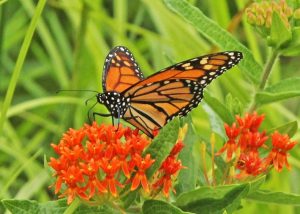Rare unplowed land near Ames may be how Iowa prairie looked 150 years ago
July 22nd, 2024 by Ric Hanson
(Radio Iowa) – Researchers recently discovered what’s known as a “remnant prairie” at the Iowa State University Horticulture Research Station and they’re working to restore it. Remnant prairies have never been plowed or completely converted into non-native species. Only about zero-point-one percent of this original habitat remains in Iowa, though it once covered nearly 80-percent of the state. Nick Howell is superintendent for the horticulture research station. “This was found as a fluke,” Howell says. “When I started here in 2006, you couldn’t even get to it. It was just completely full of scrub brush.”
He says the one-and-a-half acre area beside a lake was totally overgrown, but three years ago, a researcher recognized seeds pods under snow while working on a fish habitat project. Howell says prairie specialists came out that spring to confirm it was a remnant. “It had been protected for a long, long time,” Howell says, “and once we cleared the brush and started burning it, the prairie species started to re-appear.” Prairie intern Rachel Sents says it’s taken a significant amount of work to get the prairie back into its original shape. “Really what we’re doing out here is we’re trying to fight back on those species that are out-competing with the natives,” Sents says, “and give the natives a better chance.”

Monarchs flourish on native Iowa milkweed plants — Photo by Karl Schilling
I-S-U ecology professor Brian Wilsey says the remnant prairie at the research station north of Ames is a true gem, filled with all sorts of native plants. “This is a wild bergamot and then of course, there’s rural milkweed, one of the hosts for our monarch butterflies,” Wilsey says. “Most prairies that you visit are reconstructions, so they’re seeded prairies on old crop fields like at Neal Smith and other places. The remnants are really rare.”
Reconstructed prairies are becoming more common, Wilsey says, and they currently account for one-to-two-percent of the state.
(by Rachel Cramer, Iowa Public Radio)





